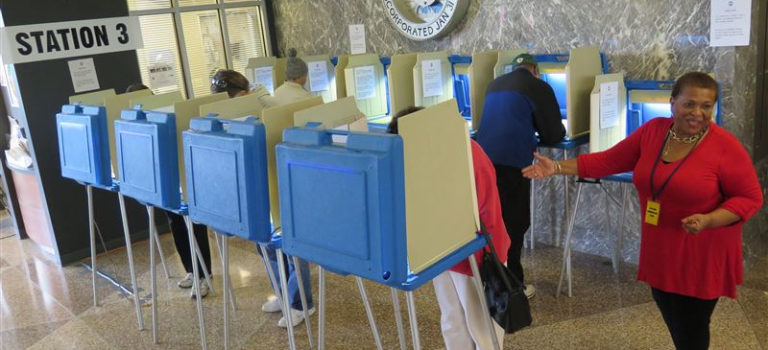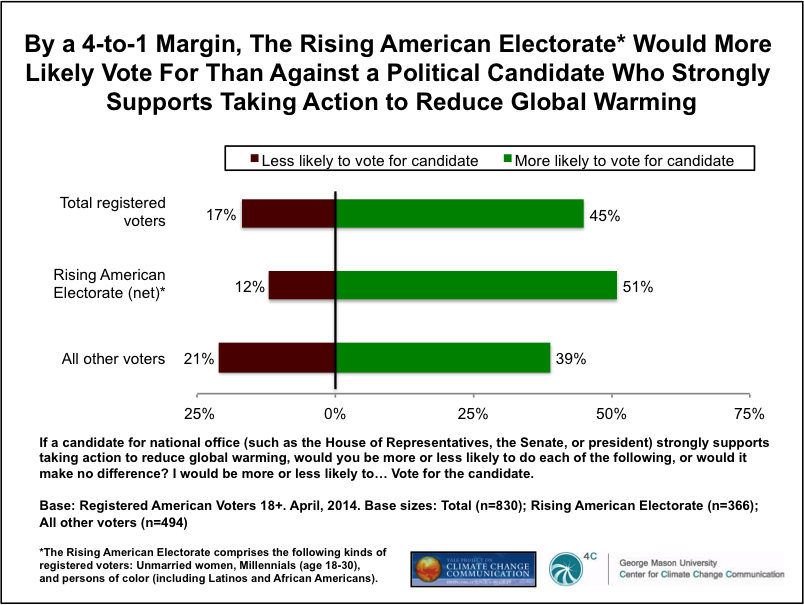Climate Note · Oct 30, 2014
Global Warming & the Rising American Electorate
Filed under: Policy & Politics

Environmental groups are spending record amounts of money on environment and energy campaign ads this season. Candidates in hotly contested races are using climate change to distinguish themselves from their opponents, even though the issue is not top-tier for voters in the midterms.
An important driver of the prominence of global warming in American politics is how the issue resonates with the so-called Rising American Electorate (RAE) – Millennials (18-to-30 year olds), Latinos, African Americans, and unmarried women, among others. According to the Census, the RAE is a rapidly growing segment within the U.S. population and as a group, the RAE comprised nearly half (48%) of the electorate in 2012 according to national exit polls.*
As the RAE votes in growing numbers, they will increasingly replace more traditional types of voters, such as older white men and married women. So what does the RAE think of global warming?
In our Spring 2014 survey, we asked a representative sample of American voters how a candidate’s support or opposition to reducing global warming would influence their vote. While all registered voters appear more likely to support a pro-climate action candidate (45%) over an anti-climate action candidate (17%), the RAE is particularly likely to do so when compared to traditional voters (51% and 12%, respectively).
Specific groups within the RAE are especially likely to support a candidate who ‘strongly supports’ climate action. For example: Hispanics are much more likely to support (65%), than oppose such a candidate (7%). Likewise African Americans are also more likely to support (53%) than oppose such a candidate (10%), while unmarried women are 53% versus 13%, respectively. Millennials are more likely to say they would support a pro-climate candidate – 44% versus 17% – but they do not differ from registered voters as a whole on this issue.
Unprecedented amounts of money have been spent on climate change this election by “megadonors” such as Tom Steyer and Charles and David Koch and environmental groups like the Sierra Club and the League of Conservation Voters. While this multi-million dollar investment in climate change politics is significant, this election may only be spring training for the 2016 season. Meanwhile, the effort to elevate the issue in elections will be increasingly influenced by the larger demographic shift in the electorate.
